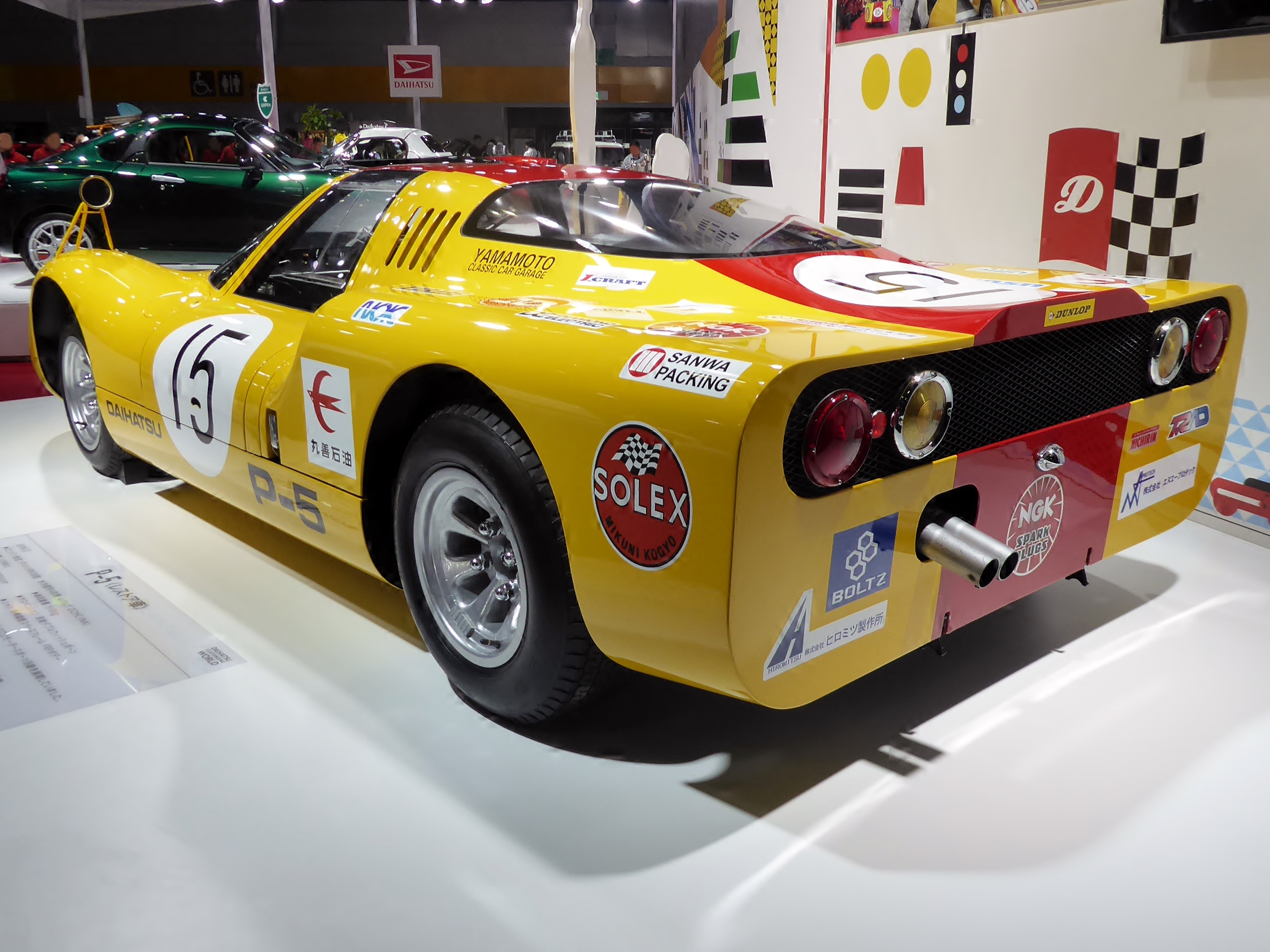Daihatsu P-5 on:
[Wikipedia]
[Google]
[Amazon]
The Daihatsu P-5 was a
 The P-5 was an updated version of the P-3, but featured a bigger 1.3-litre
The P-5 was an updated version of the P-3, but featured a bigger 1.3-litre
sports racing car
Sports car racing is a form of motorsport road racing which utilises sports cars that have two seats and enclosed wheels. They may be purpose-built prototypes or grand tourers based on road-going models. Broadly speaking, sports car racing is o ...
built by Daihatsu
, commonly known as Daihatsu, is a Japanese automobile manufacturer and one of the oldest surviving Japanese internal combustion engine manufacturers. The company's headquarters are located in Ikeda, Osaka Prefecture.
Historically, Daihatsu was ...
in 1967. It was an evolution of the P-3, and featured a 1.3-litre twin-cam straight-four engine
A straight-four engine (also called an inline-four) is a four-cylinder piston engine where cylinders are arranged in a line along a common crankshaft.
The vast majority of automotive four-cylinder engines use a straight-four layout (with the ...
capable of producing around about 130-140 PS.
History
 The P-5 was an updated version of the P-3, but featured a bigger 1.3-litre
The P-5 was an updated version of the P-3, but featured a bigger 1.3-litre straight-four engine
A straight-four engine (also called an inline-four) is a four-cylinder piston engine where cylinders are arranged in a line along a common crankshaft.
The vast majority of automotive four-cylinder engines use a straight-four layout (with the ...
, fitted in the rear of the car. The engine had double overhead camshaft
An overhead camshaft (OHC) engine is a piston engine where the camshaft is located in the cylinder head above the combustion chamber. This contrasts with earlier overhead valve engines (OHV), where the camshaft is located below the combustion cha ...
s and two carburettors
A carburetor (also spelled carburettor) is a device used by an internal combustion engine to control and mix air and fuel entering the engine. The primary method of adding fuel to the intake air is through the venturi tube in the main meterin ...
, and was capable of producing up to . It was shown at the 14th Tokyo Motor Show
The is a biennial auto show held in October–November at the Tokyo Big Sight, Tokyo, Japan for cars, motorcycles and commercial vehicles. Hosted by the Japan Automobile Manufacturers Association (JAMA), it is a recognized international show by ...
in October 1967 as the Daihatsu P-5X.
Two P-5s were entered in the Japanese Grand Prix
The Japanese Grand Prix ( ja, 日本グランプリ, Nihon-guranpuri) is a motor racing event in the calendar of the Formula One, Formula One World Championship. Historically, Japan has been one of the last races of the season, and as such the ...
in 1967. It was entered in the 1000 km of Suzuka
The Suzuka Summer Endurance Race is an annual motorsport event for Sports car racing, sports cars that has been held at the Suzuka International Racing Course, Mie Prefecture, Japan since 1966, and the oldest automobile Endurance racing (motorsport ...
in 1968, finishing third. It was then run in the Japanese Grand Prix again, which was held at Fuji Speedway
is a motorsport race track standing in the foothills of Mount Fuji, in Oyama, Suntō District, Shizuoka Prefecture, Japan. It was built in the early 1960s. In the 1980s, Fuji Speedway was used for the FIA World Sportscar Championship and nati ...
; the No.15 car won its class, and finished tenth overall. Toyota
is a Japanese multinational automotive manufacturer headquartered in Toyota City, Aichi, Japan. It was founded by Kiichiro Toyoda and incorporated on . Toyota is one of the largest automobile manufacturers in the world, producing about 10 ...
bought Daihatsu in 1969, but the car was used one last time; it finished second in the 1000 km of Suzuka that year.
References
Sports racing cars P-5 {{sportscar-autoracing-stub